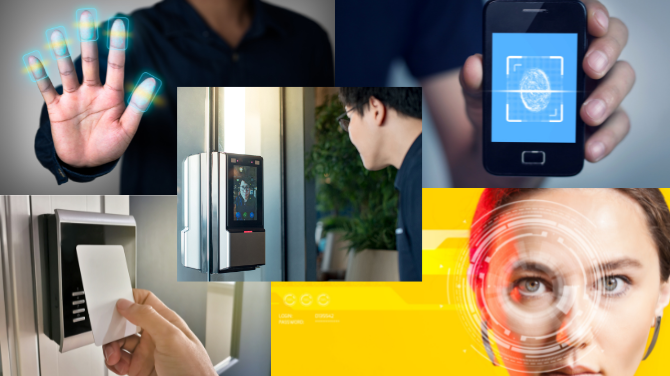The ongoing COVID pandemic has changed existing business practices globally; the access control industry is also experiencing the impact. Recently, organizations have started switching to touch-less authentication technology, which requires absolutely no human contact. In the blog, we have done a comparative analysis based on various security and user-experience-and-adoptability parameters of the most popular touch-less authentication systems for physical access control.

Facial recognition
Facial recognition has found widespread usage in various industries, including the access control industry. Facial recognition technology first identifies various nodal points of an individual’s face using an image processing technique; the extractor algorithm then converts facial features into a numeric code that is unique to each person. During verification, the person’s unique numeric code is compared to a database of known faces to find a match.
Mobile credentials
People may forget to carry an access card, but they never fail to bring their mobile phones. Hence mobile-based credentials have emerged as a suitable touch-less alternative to conventional access credentials such as smart cards and biometrics. It is also a securer alternative to smart cards in that the smartphone credentials are uniquely generated for each mobile device using various proprietary algorithms. Moreover, it stays safe behind multiple layers of security such as PIN/ password or biometrics. Mobile credentials use Bluetooth technology or NFC to transmit user credentials from a mobile device to an access control reader.
IRIS Recognition
IRIS recognition is an automated biometric identification method that uses mathematical pattern-recognition techniques on video images of one or both IRIS. Like a fingerprint, the IRIS pattern is unique for everyone. There are two different stages of the IRIS- scanning system, namely, enrollment and verification. First, the system scans the iris of each person using infrared light. Exposure to infra-red light shows the unique features of darkly colored eyes, that are not visible clearly under ordinary light. The extraction algorithm then converts these unique features into a simple digital code stored in the biometric database. During verification, the individual’s IRIS is scanned and matched with the IRIS profile in the database.
Contactless fingerprint recognition
Contactless fingerprint recognition is the latest type of biometric technology that is growing in popularity. The technology acquires the 3D fingerprint of four fingers for maximum accuracy, by just waving a hand over the sensor. The solution is highly secure, and convenient and provides a frictionless access experience with utmost precision.
Smart Cards
We refer to proximity cards or contactless smart cards by smart cards, which an access control reader reads without any direct contact. The Smart-card can even be kept in a wallet, and the reader can still read it. Different brands offer proximity cards of different read ranges, varying from anywhere between 1 to 4 inches. The smart cards mostly operate at 13.56 MHz frequency, drawing the power from a reader itself using Electro-magnetic induction. That’s why the smart cards do not require any in-built batteries and are therefore also referred to as Passive Cards or Tags.
Conclusion
AYS systems, we offer a door access control system for offices and homes and make you are surrounding a better place to live. Why tolerate unauthorized access, when you leverage the best access control system in the UK? If you are concerned about a vile entry into your office, our wireless access system/video door access control system is the answer to your fear. Never miss a visitor; you’ll be notified every time anyone visits your office.
Contact us : 02031512030
The antiviral activity of glycyrrhizic acid includes the inhibition of viral replication and immune regulation <a href=//enhanceyourlife.mom/>priligy review</a>